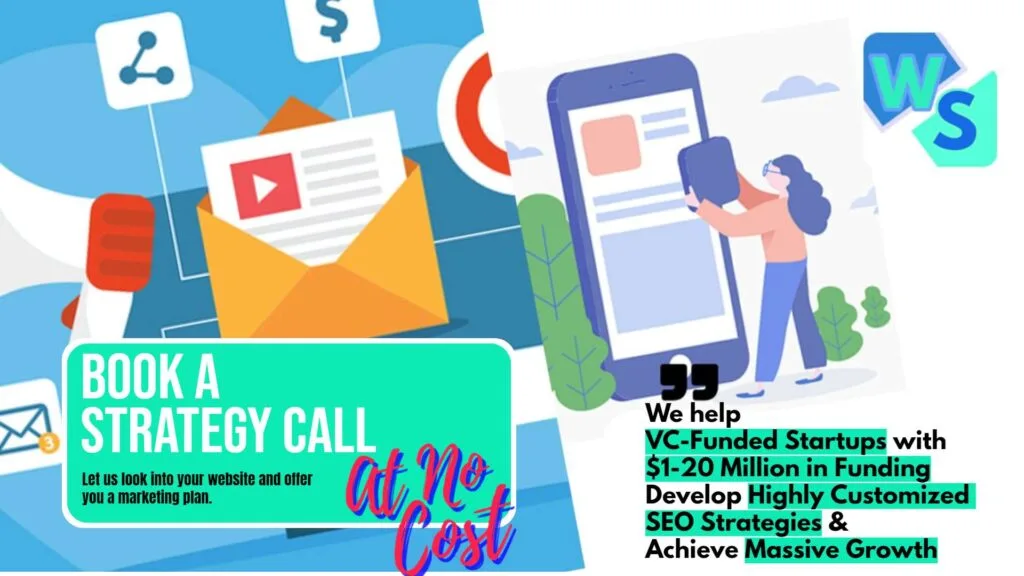This Article has been revised, edited and added to, by Poulomi Chakraborty.
- Setting the Scene: The Digital Marketing Spectrum
- Strategic Budgeting: Understanding Needs and Goals
- The Financial Implications: ROI and Cash Flow Considerations
- Balancing Short-Term Gains and Long-Term Growth
- Maintaining a Harmonious Relationship: SEO and Paid Advertising Synergy
- Risk Management: Diversifying and Future-Proofing Marketing Budgets
- Continuous Learning and Skill Development: Amplifying ROI
- Concluding Thoughts: A Dynamic Dance Between SEO and Paid Advertising
In the digital landscape, startups face the ongoing challenge of determining where to allocate their marketing budget. Both SEO (Search Engine Optimization) and paid advertising have their unique strengths, making it essential for startups to strike the right balance. This article will delve into the intricacies of SEO and paid advertising, offering insights into effective budget allocation strategies.
Setting the Scene: The Digital Marketing Spectrum

Digital marketing for startups encompasses a broad spectrum of activities, each with its unique set of advantages and challenges. At its core, digital marketing revolves around two primary components: Search Engine Optimization (SEO) and paid advertising. SEO focuses on enhancing your website’s visibility organically, without paying for placements, whereas paid advertising involves purchasing ads to directly target potential customers. For startup founders, understanding how to leverage both components effectively is crucial for driving growth and establishing a strong online presence.
Crafting a Balanced Approach
Achieving a balance between SEO and paid advertising requires a strategic approach, tailored to your startup’s goals, budget, and stage of development. Initially, it’s vital to establish a robust foundation for your online presence. This means focusing on building a user-friendly website, creating high-quality content that aligns with the interests of your target audience, and ensuring your site is optimized for search engines. These SEO efforts are cost-effective and yield long-term benefits, such as increased credibility and organic traffic.
Concurrently, paid advertising offers immediate visibility and can be an effective tool for driving quick results, such as product launches or promotional campaigns. Platforms like Google Ads and social media channels allow for precise targeting and flexibility in budgeting, which is essential for startups that need to manage resources wisely.
Integrating SEO and Paid Advertising Strategies
To integrate SEO and paid advertising effectively, start by analyzing your target audience and market conditions. Use data-driven insights to understand customer behavior, preferences, and search trends. This analysis will help you tailor your content and ad placements to the segments of your audience most likely to convert, ensuring optimal use of your marketing budget.
Next, focus on keyword synergy between your SEO efforts and paid campaigns. Identifying the keywords that are performing well organically can inform your paid advertising strategy, allowing you to double down on these terms to maximize visibility. Similarly, testing keywords through paid campaigns can provide valuable data that can enhance your SEO efforts.
Monitoring, Testing, and Adapting
The digital marketing landscape is dynamic, making continuous monitoring and adaptation a necessity. Use analytics tools to track the performance of both your SEO and paid advertising efforts. This not only helps in understanding what works but also identifies areas for improvement. Regular testing of different strategies, such as A/B testing ad copy or trying new keywords, can provide fresh insights and help refine your approach.
Additionally, it’s crucial to stay updated with the latest digital marketing trends and algorithm updates by search engines. These changes can impact your marketing effectiveness, and adapting your strategy accordingly is key to maintaining and improving your market position.
Leveraging Strategic Partnerships
For startups, forming strategic partnerships can be a game-changer in amplifying the impact of your digital marketing efforts. Partnering with other businesses or influencers in your industry can help extend your reach, enhance your brand’s credibility, and drive more traffic to your site through shared audiences. These partnerships can be particularly effective in combining SEO benefits with the immediate boost of paid advertising, offering a compound effect on your overall marketing strategy.
By understanding the spectrum of digital marketing and strategically integrating SEO and paid advertising, startup founders can create a powerful approach to marketing that not only fits their budget but also drives sustainable growth. This balanced strategy is not about choosing one over the other but about using each to complement and enhance the effectiveness of the other.
Strategic Budgeting: Understanding Needs and Goals

The first step in strategic budgeting for digital marketing is to clearly define your startup’s marketing objectives. These objectives should align with your overall business goals and could range from building brand awareness and increasing website traffic to generating leads or boosting sales. Understanding what you want to achieve helps in allocating your budget more effectively, ensuring that each dollar spent contributes towards measurable outcomes.
Aligning Budgets with Business Stages
The stage of your business plays a critical role in how you should allocate your marketing budget between SEO and paid advertising. Early-stage startups might focus more on SEO to build a strong organic presence that pays long-term dividends, whereas more established startups may use paid advertising to quickly gain market share and drive immediate results. Recognize where your business stands and adjust your budgeting strategy accordingly to support your current needs while setting the stage for future growth.
Assessing Resource Allocation
Resource allocation involves more than just setting aside money for different marketing tactics. It includes assessing the human and technical resources needed to execute these strategies effectively. For SEO, this might mean investing in skilled personnel to handle content creation, website optimization, and analytics. For paid advertising, it involves budgeting for ad spend as well as the tools and expertise required to manage campaigns and analyze performance data.
Utilizing Data for Budget Optimization
Utilizing data is key to optimizing your marketing budget. By analyzing the performance data from previous SEO and paid advertising efforts, you can identify which strategies have provided the best return on investment. This data-driven approach allows you to adjust your budget allocations dynamically, investing more in the most effective tactics. For instance, if paid search ads are driving significant revenue, it might be worthwhile to increase this budget segment, or if SEO efforts are leading to high-quality leads, further investment in SEO could be beneficial.
Planning for Scalability and Flexibility
In the ever-changing landscape of digital marketing, flexibility is crucial. Plan your budget in a way that allows for adjustments based on performance and market trends. This might mean setting aside a portion of the budget as a reserve to take advantage of unexpected opportunities or to increase spending in areas that are performing well. Scalability should also be considered, ensuring that your strategy can grow and evolve as your business expands.
Conducting Competitive and Market Analysis
Regularly conducting competitive and market analysis can provide insights that influence how you allocate your budget. Understanding the marketing strategies employed by your competitors and the overall market conditions can help you identify opportunities and threats. For example, if competitors are heavily investing in paid social media campaigns, you might want to explore this channel or alternatively find underutilized channels to avoid direct competition.
By taking a strategic approach to budgeting, aligned with detailed understanding of your startup’s needs and goals, you can maximize the impact of your SEO and paid advertising efforts. This not only helps in optimizing the use of financial resources but also in building a foundation for sustained growth and competitiveness in the digital arena.
The Financial Implications: ROI and Cash Flow Considerations

The Return on Investment (ROI) is a critical metric for assessing the efficiency of your digital marketing investments. To properly evaluate the ROI from SEO and paid advertising, it’s essential to track not only direct outcomes like sales and leads but also indirect benefits such as brand visibility and customer engagement. Understanding the ROI of each marketing channel will enable you to make informed decisions about where to allocate your budget to maximize returns. A thorough analysis includes calculating the cost of acquisition per customer and comparing it against the lifetime value of these customers, ensuring that your spending aligns with sustainable growth.
Managing Cash Flow for Marketing Spend
Cash flow management is particularly crucial for startups, where funds can often be limited. Prioritizing investments that align with your immediate business goals can help maintain a healthy cash flow. For instance, while SEO is generally less costly upfront and offers long-term benefits, its results might take time. On the other hand, paid advertising requires a significant upfront investment but can generate immediate returns. Balancing these strategies based on your cash flow situation can help maintain a steady stream of marketing activities without compromising financial stability.
Forecasting for Future Spend
Looking ahead is vital in budget planning. By forecasting future spending based on current and projected returns, startups can avoid common pitfalls such as underfunding successful campaigns or continuing inefficient ones. This forward-looking approach also aids in anticipating market changes, adjusting strategies in advance to capitalize on trends or avert risks. Regularly updating these forecasts as new data becomes available ensures that your budget remains responsive to both your company’s needs and market dynamics.
Setting Realistic Expectations
It’s important for startup founders to set realistic expectations regarding the outcomes of SEO and paid advertising efforts. While paid advertising can offer quick wins, SEO is a long-term strategy that builds value over time. Understanding and communicating these timelines within your organization ensures that stakeholders are aligned with the strategic direction and budget allocation. It also helps prevent shifting strategies prematurely, allowing enough time for each approach to demonstrate its effectiveness.
Leveraging Financial Tools and Analytics
Utilizing financial tools and analytics software can enhance your ability to manage and optimize marketing budgets. These tools offer insights into spending efficiency, campaign performance, and overall financial health. By integrating these tools into your regular marketing analysis, you can track real-time results, adjust campaigns on the fly, and better predict future performance, thereby optimizing each dollar spent towards achieving your startup’s goals.
By focusing on ROI, managing cash flow effectively, forecasting future needs, setting realistic expectations, and leveraging the right tools, startup founders can navigate the financial complexities of balancing SEO and paid advertising. This strategic financial management supports not just survival but thriving in competitive digital marketing landscapes.
Balancing Short-Term Gains and Long-Term Growth

The key to balancing short-term gains with long-term growth lies in understanding the distinct roles that SEO and paid advertising play in a digital marketing strategy. SEO is inherently a long-term investment, building your brand’s authority and organic search visibility over time. It lays down a foundation of trust and relevance, which does not generate immediate traffic spikes but gradually increases the quality and quantity of your inbound traffic. Conversely, paid advertising is designed to deliver quick results. It can generate immediate leads and sales, making it ideal for meeting short-term objectives like promoting a new product launch or capitalizing on a seasonal peak in consumer interest.
Integrating Tactical and Strategic Approaches
To maintain a healthy balance between immediate results and sustainable growth, startups need to integrate both SEO and paid advertising into a cohesive strategy. This begins with a clear understanding of your business cycle and customer journey. Deploy paid advertising to fill in the gaps where SEO might take time to make an impact, such as testing new markets or boosting visibility during key business events. Meanwhile, consistently invest in SEO to build a durable online presence that supports and enhances your paid advertising efforts by increasing your overall website credibility and organic reach.
Adjusting Allocation According to Performance and Goals
Continuous monitoring and adjustment of your marketing strategies are vital. Evaluate the performance of both SEO and paid advertising regularly to understand their impact on your business goals. If paid advertising is showing a higher ROI in the short term, it might be tempting to shift more budget there. However, consider the long-term implications of neglecting SEO, which may lead to increased costs per acquisition as the market becomes more competitive or as paid ad costs rise. Balancing investment in both areas ensures that you are not overly dependent on one channel, which could expose your business to higher risks if market conditions change.
Fostering Synergy Between Channels
Create a synergy between your SEO and paid advertising efforts to maximize the overall effectiveness of your digital marketing. Use insights gained from your SEO strategy, like keyword performance and user engagement metrics, to refine and optimize your paid advertising campaigns. Similarly, insights from paid advertising can provide valuable data on consumer behavior and market trends that can be used to fine-tune your SEO strategies. This cross-pollination not only improves each strategy’s performance but also reduces overall marketing costs by increasing efficiency.
Planning for Scalability
As your startup grows, your strategies should evolve too. Plan for scalability by setting up scalable processes and infrastructure. Automate routine tasks, use scalable cloud services for data analytics, and ensure your marketing teams are trained to handle increased responsibilities or more complex campaigns. Scalability in marketing ensures that you can maintain a balance between short-term gains and long-term growth even as your budget and resources grow, allowing you to capture new opportunities without sacrificing the groundwork laid by earlier SEO and paid advertising efforts.
By thoughtfully balancing the immediate impacts of paid advertising with the enduring benefits of SEO, startups can build a robust digital marketing strategy that supports both quick wins and sustained success. This approach not only aligns with varying financial objectives but also adapts to the evolving nature of competitive landscapes, ensuring that your business remains agile and growth-oriented.

Related: Check out our free SEO suite

Maintaining a Harmonious Relationship: SEO and Paid Advertising Synergy
The synergy between SEO and paid advertising begins with a shared foundation of data-driven insights. Understanding your audience’s behavior, preferences, and search patterns is crucial. Use analytics tools to gather data from both your SEO and paid advertising efforts. This information should guide your decision-making process, informing everything from keyword selection to content creation. By aligning your strategies based on real user data, you can ensure that both SEO and paid campaigns are targeting the same goals and complementing each other’s strengths.
Leveraging Content Across Channels
Content created for SEO purposes, such as blog posts, white papers, and videos, can be effectively repurposed for paid advertising campaigns. Similarly, the learnings from the messaging and visuals that perform well in ads can inform your organic content strategy. This not only saves resources but also ensures consistency in your brand messaging across all channels. By integrating content marketing strategies, you can increase the touchpoints where customers interact with your brand, enhancing the overall customer journey from awareness to conversion.
Coordinating Keyword Strategies
A coordinated keyword strategy can amplify the effectiveness of both SEO and paid advertising. Identify high-performing keywords in your paid campaigns and integrate them into your SEO strategy to boost organic rankings. Conversely, organic search insights can reveal untapped opportunities for paid search. This reciprocal approach not only increases your visibility across search engines but also optimizes your spending by focusing on keywords known to drive results.
Harmonizing Campaign Timing and Messaging
Align the timing and messaging of your SEO and paid advertising efforts to maximize impact. For instance, if you’re launching a new product or entering a seasonal peak, synchronize your SEO content updates and paid ad campaigns to create a cohesive market entry. This unified approach not only strengthens your market presence but also provides a seamless experience for customers, enhancing brand perception and effectiveness of the marketing spend.
Utilizing Paid Ads to Test and Refine SEO
Paid advertising can serve as a testing ground for your SEO strategy. Use paid ads to quickly gauge the effectiveness of certain keywords or content themes before integrating them into your long-term SEO strategy. This can include testing user engagement with different types of content, headlines, or landing pages. Insights gained from these tests can be used to optimize your organic content, ensuring that it is as compelling and effective as possible.
Monitoring, Measuring, and Modifying
Continuous monitoring and measuring of both SEO and paid advertising are essential to maintain their synergy. Set up regular reviews of campaign performance against set KPIs to ensure both strategies are delivering the desired outcomes. Be prepared to modify your approach based on these insights. If one strategy outperforms the other, consider reallocating resources to maximize overall effectiveness, but always keep the long-term balance in mind.
By fostering a synergistic relationship between SEO and paid advertising, startups can create a more robust and effective digital marketing strategy. This approach not only optimizes budget allocation but also drives more consistent and higher-quality traffic to your platforms, enhancing both immediate results and long-term growth.
Risk Management: Diversifying and Future-Proofing Marketing Budgets

Diversifying your marketing efforts across multiple channels is a fundamental strategy for reducing risk and enhancing the resilience of your marketing budget. By not relying solely on SEO or paid advertising, you can protect your startup from the volatility associated with algorithm changes, platform updates, and shifts in consumer behavior. Incorporating a mix of email marketing, social media, content marketing, and even offline channels ensures that changes in one arena don’t derail your overall marketing efforts. This multi-channel approach not only spreads risk but also increases the touchpoints with potential customers, enhancing the customer journey and opening up new avenues for conversion.
Adapting to Technological Advances and Market Trends
To future-proof your marketing budget, stay abreast of technological advances and evolving market trends. The digital marketing landscape is constantly changing, with new tools, platforms, and tactics emerging regularly. By keeping an eye on these developments and being ready to adapt, you can ensure that your marketing strategy remains relevant and effective. Regular training for your marketing team and investments in new technologies can equip your business to pivot quickly and take advantage of emerging opportunities.
Establishing Flexibility in Budget Allocation
Building flexibility into your marketing budget is essential for quick adaptation to market changes and new opportunities. Allocate a portion of your budget for experimental campaigns and emerging channels, allowing you to test new ideas without risking your core budget. This approach not only helps you discover potentially lucrative new strategies but also keeps your marketing efforts dynamic and innovative.
Implementing Strong Analytical Capabilities
Robust analytical capabilities are crucial for monitoring the effectiveness of your marketing strategies and making informed decisions. Investing in advanced analytics tools and developing in-house expertise can provide deep insights into customer behavior, campaign performance, and ROI. This data-driven strategy enables you to make adjustments swiftly and confidently, minimizing losses and maximizing the impact of successful tactics.
Creating a Scalable Marketing Framework
Develop a marketing framework that can scale with your business. This involves setting up scalable processes, choosing flexible platforms, and maintaining a balance between automation and human oversight. A scalable framework allows you to increase your marketing efforts without a corresponding increase in errors or inefficiencies, ensuring that your marketing budget grows effectively with your business.
Conducting Regular Risk Assessments
Regularly assess the risks associated with your digital marketing strategies. This includes reviewing the performance stability of your SEO and paid advertising, analyzing the security of your data, and evaluating the financial health of your marketing spend. These assessments will help you identify potential risks early and develop strategies to mitigate them, ensuring that your marketing efforts are both safe and productive.
By diversifying your marketing efforts, staying adaptable, maintaining budget flexibility, leveraging strong analytics, building scalability into your processes, and regularly assessing risks, you can effectively manage the risks associated with your marketing budget. This proactive approach not only safeguards your investments but also positions your startup for sustained growth and success in a competitive digital landscape.
Continuous Learning and Skill Development: Amplifying ROI

In the rapidly evolving world of digital marketing, fostering a culture of continuous learning within your team is crucial. This involves regularly updating the skill sets of your marketing personnel through workshops, online courses, and attendance at industry conferences. Encouraging team members to stay abreast of the latest SEO techniques, paid advertising platforms, and analytic tools can significantly enhance the effectiveness of your marketing efforts. By investing in your team’s education, you not only improve your campaigns’ ROI but also motivate your employees, leading to higher job satisfaction and retention rates.
Integrating Advanced Analytics into Decision-Making
Advanced analytics play a vital role in understanding the effectiveness of marketing strategies and guiding decisions. Implement analytics at every level of your SEO and paid advertising efforts to track their performance and identify areas for improvement. Utilize machine learning and artificial intelligence tools to parse large data sets for insights that can refine targeting, optimize ad spend, and personalize content. By making analytics a cornerstone of your strategy, you ensure that your decisions are data-driven and can dynamically adjust strategies in real-time to maximize ROI.
Leveraging Industry Insights and Case Studies
To amplify the ROI of your marketing investments, it is beneficial to look outside your organization and learn from the broader industry. Regularly review case studies and industry reports to understand how similar companies have successfully managed their SEO and paid advertising. This insight can provide practical examples of what works and what doesn’t, helping you avoid common pitfalls and replicate successful strategies. Engaging with industry forums and professional networks can also offer opportunities for learning from peers and experts.
Adopting Agile Marketing Techniques
Agile marketing techniques can significantly enhance your ability to respond quickly to changes in the market or in the performance of your campaigns. Adopt principles such as iterative development, continuous feedback, and cross-functional collaboration. This approach allows you to launch campaigns more quickly, test hypotheses in real-time, and refine strategies based on immediate data. An agile approach reduces waste through incremental improvement, ensuring that resources are allocated to high-performing tactics that directly contribute to business goals.
Building Strategic Partnerships for Knowledge Exchange
Establishing partnerships with other startups, agencies, or technology providers can facilitate a valuable exchange of knowledge and resources. These partnerships might offer insights into cutting-edge marketing technologies or strategies through shared experiences. Additionally, co-marketing efforts can not only extend your reach but also allow you to share the costs and insights from campaigns, increasing your marketing leverage while containing costs.
Documenting and Sharing Internal Best Practices
Finally, amplify ROI by documenting successes and failures within your own campaigns. Develop a knowledge base where these insights are continuously updated and made accessible to all team members. Encouraging a practice of internal documentation and sharing helps your marketing team avoid repeating past mistakes and leverage what has worked well in the past. This not only speeds up the training process for new team members but also builds a repository of tested strategies that can streamline future campaign planning.
By promoting a culture of continuous learning, integrating analytics deeply into your marketing strategy, learning from both internal and external sources, adopting agile methodologies, building strategic partnerships, and documenting best practices, you can significantly amplify the ROI of your marketing efforts. This holistic approach ensures that your marketing team remains at the cutting edge of digital marketing trends and techniques, positioning your startup for long-term success.
Concluding Thoughts: A Dynamic Dance Between SEO and Paid Advertising
The journey of budget allocation for startups is akin to a dynamic dance, with SEO and paid advertising as the principal dancers. While each has its rhythm, ensuring they move in harmony can lead to a mesmerizing performance, driving startup success.
By understanding the unique value propositions of both, aligning strategies with business objectives, harnessing data, and staying agile, startups can effectively navigate the digital marketing landscape, maximizing ROI and ensuring sustained growth.
Read Next:
- Startup SEO Budget Allocation: Balancing Paid and Organic Strategies
- Cost-Effective Startup SEO: Maximizing ROI with Limited Budgets
- The Link Between SEO Budget and Long-Term ROI for Startups
- Factors Influencing Startup SEO Budget Allocation
- Allocating Resources: Creating a Comprehensive SEO Budget Plan





















Comments are closed.